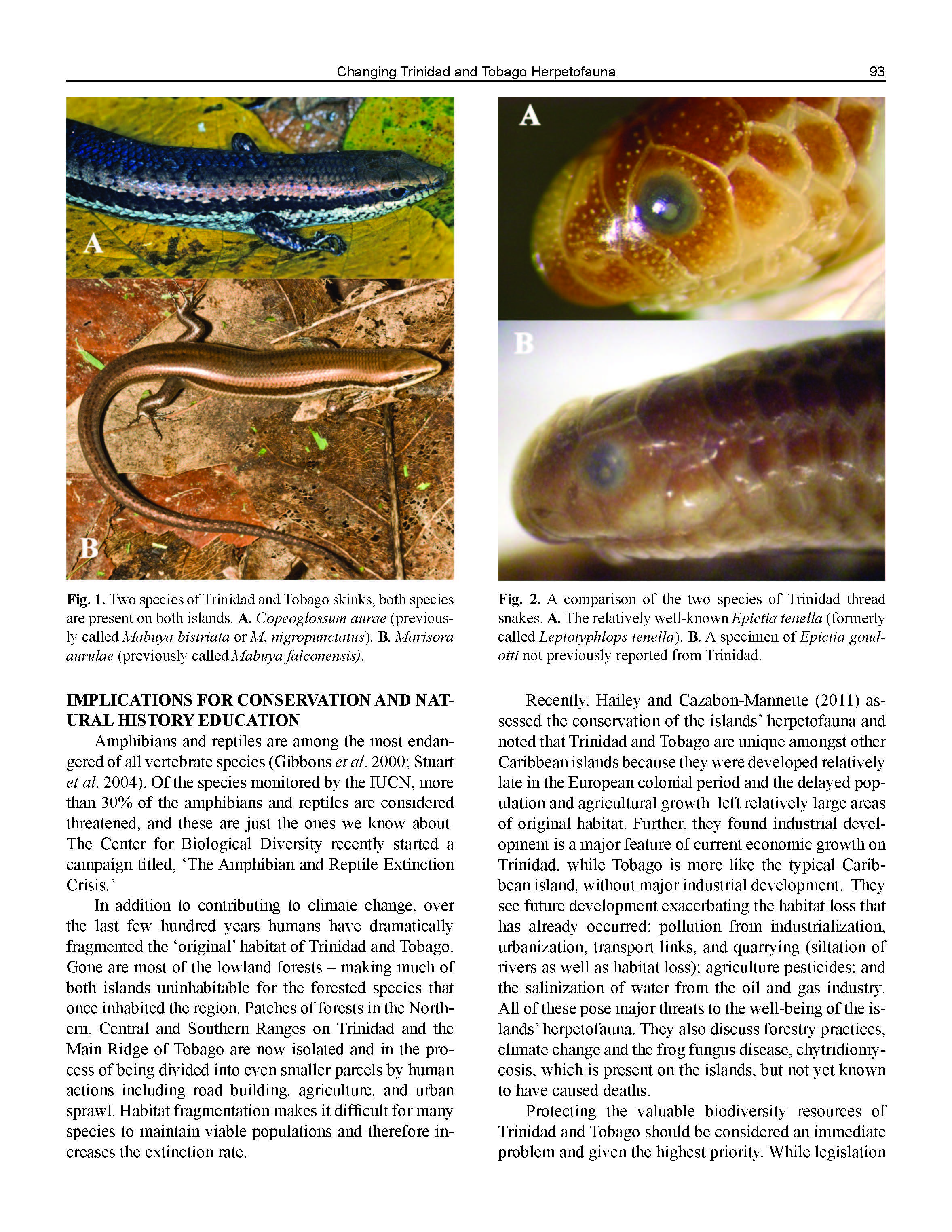The Changing Trinidad and Tobago Herpetofauna
Keywords:
cryptic species, cladistics, DNA, systematics, biodiversityAbstract
The Trinidad and Tobago herpetofauna is rich in species and the numbers of recognised species on the islands are expected to grow despite the extensive efforts previously made to study the fauna. Recent advances in molecular technology and cladistics form the basis for these changes. Cryptic species have been found to be quite common and many of these remain to be described from the islands. Here we note name changes and additions to the herpetofauna since 1997, comment on the likelihood that the island still contains species that have gone unrecognized by science; discuss the implications of cryptic species for conservation efforts; and suggest that education is the long-term solution to retaining the biodiversity of Trinidad and Tobago.

